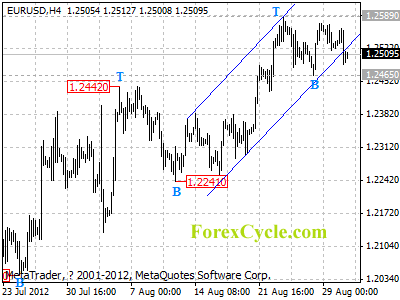By TraderVox.com

Tradervox.com (Dublin) – Spanish Prime Minister Mariano Rajoy has decided to wait for a while longer before requesting for bailout for his country. The move has boosted the demand for safe haven assets, which has strengthened the yen. The Japanese currency has gained against most of its major trading peers as three major regions Spain applied for emergency loans from the central government. In the meantime, Moody’s Investors Service has indicated that Spain’s rating will be extended through September and there is a higher chance that they will be reviewed downwards. However, the dollar held firm as investors speculated about Ben S. Bernanke’s speech.
According to Ken Takahashi, an Assistant President of Global Market at Sumitomo Mitsui Trust Bank Ltd in New York, the yen has remained strong as investors seek safety. He also suggested that Bernanke is likely to refrain from making any commitment to specific policy at Jackson Hole. These comments came after Spanish Prime Minister indicated, in a meeting with French President, that the nation will not be seeking sovereign bailout until European leaders are clear on their conditions. Moody’s also indicated that Spain will retain its BAA3 debt rating after downgrading it in June 13 from A3 rating.
The yen also increased against its major after it become apparent that three regions in Spain, Valencia, Murcia, and now Catalonia, have requested for bailout from the national government. These statistics have forced the euro to drop 0.1 percent this week against the dollar but has registered a monthly increase against the US currency. The Japanese currency has strengthened 0.3 against the dollar and 0.4 against the euro this week.
The news of Spanish bailout request delay spurred the yen to a 0.2 percent advance against the dollar to exchange at 78.46 yen. The Japanese currency has advanced by 0.3 percent against the euro to trade at 98.06 per euro.
Disclaimer
Tradervox.com is not giving advice nor is qualified or licensed to provide financial advice. You must seek guidance from your personal advisors before acting on this information. While we try to ensure that all of the information provided on this website is kept up-to-date and accurate we accept no responsibility for any use made of the information provided. Opinions expressed at Tradervox.com are those of the individual authors and do not necessarily represent the opinion of Tradervox.com or its management.
Article provided by TraderVox.com
Tradervox.com is a Forex News Portal that provides real-time news and analysis relating to the Currency Markets.
News and analysis are produced throughout the day by our in-house staff.
Follow us on twitter: www.twitter.com/tradervox


